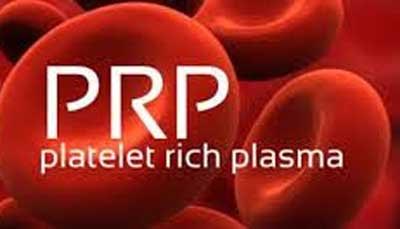- Home
- Editorial
- News
- Practice Guidelines
- Anesthesiology Guidelines
- Cancer Guidelines
- Cardiac Sciences Guidelines
- Critical Care Guidelines
- Dentistry Guidelines
- Dermatology Guidelines
- Diabetes and Endo Guidelines
- Diagnostics Guidelines
- ENT Guidelines
- Featured Practice Guidelines
- Gastroenterology Guidelines
- Geriatrics Guidelines
- Medicine Guidelines
- Nephrology Guidelines
- Neurosciences Guidelines
- Obs and Gynae Guidelines
- Ophthalmology Guidelines
- Orthopaedics Guidelines
- Paediatrics Guidelines
- Psychiatry Guidelines
- Pulmonology Guidelines
- Radiology Guidelines
- Surgery Guidelines
- Urology Guidelines
Platelet-rich plasma effective for facial rejuvenation: JAMA

Platelet-rich plasma is effective for facial rejuvenation, specifically for improving the texture and colour of photodamaged facial skin, finds a new study.
Chicago, Illinois: In a quest for eternal youth, more and more cosmetic procedures are gaining popularity and one such rising trend is platelet-rich plasma (PRP) injections, also dubbed as vampire facials. Most studies evaluating PRP injection for facial rejuvenation and other cosmetic procedures have reported positive results. But there remains little experimental evidence and no randomized clinical trial to date to confirm its benefit for facial rejuvenation.
The study, published in the JAMA Dermatology, has found that a single treatment of PRP improved the fine and coarse texture of the photoaged facial skin -- premature ageing of the skin caused by repeated exposure to UV rays from the sun -- compared with normal saline. Those treated with PRP had a significantly less rough and wrinkled skin at 6 months.
Platelet-rich plasma therapy uses a person’s own blood for use in heart surgery, sports medicine, and wound care. PRP works by centrifuging blood to separate white blood cells and platelets from that of red resulting in platelet and white blood cell rich concentrations that can be injected into a specific area or applied topically to areas which need healing, such as acne scarred skin, to naturally enhance the body’s biological healing process.
Murad Alam, Department of Dermatology, Feinberg School of Medicine, Northwestern University, Chicago, Illinois, and colleagues conducted this randomized clinical trial to investigate whether PRP injection improves the visual appearance, including texture and colour, of photodamaged facial skin.
The study involved 27 participants aged 18 to 70 years having bilateral cheek rhytids of Glogau class II or greater. They were masked to receive either platelet-rich plasma or normal saline. The duration of the study was August 21, 2012, to February 16, 2016. Of 27 enrolled participants, 19 (mean [SD] age, 46.37 [10.88] years; 17 female) were analyzed.
Key Findings:
- Reported adverse events, which were not associated with the study agent, included redness (n = 18), swelling (n = 16), bruising (n = 14), pruritus (n = 1), skin scaling (n = 1), and dryness of skin (n = 1).
- No participants reported any adverse events at 12 months.
- Mean (SD) photoaging scores rated by 2 dermatologists showed no significant difference between PRP and normal saline for fine lines, mottled pigmentation, skin roughness, and skin sallowness.
- At 6 months after a single treatment, participants rated the PRP-treated side as significantly more improved compared with normal saline for texture and wrinkles.
"Masked participants noted that both fine and coarse texture improved significantly more with a single treatment of PRP than with normal saline. Both participants and raters found PRP to be nominally but not significantly superior to normal saline," concluded the authors.
For further reference follow the link: 10.1001/jamadermatol.2018.3977

Disclaimer: This site is primarily intended for healthcare professionals. Any content/information on this website does not replace the advice of medical and/or health professionals and should not be construed as medical/diagnostic advice/endorsement or prescription. Use of this site is subject to our terms of use, privacy policy, advertisement policy. © 2020 Minerva Medical Treatment Pvt Ltd